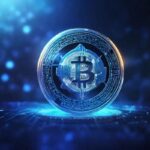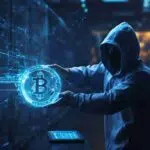The BNB token has an auto-burn system that reduces the token supply to an acceptable range. BNB auto-burn employs two coin-burning mechanisms. The first involves burning a portion of the BNB spent as gas fees on the BNB Chain. The second consists of BNB burning events held quarterly.
The percentage to be burnt will be calculated as the total number of BNB created in the period. The BNB auto-burn mechanism calculates the burn amount with the then-prevailing BNB price and the blocks created on the BNB Chain in a particular quarter. This mechanism enhances the transparency as well as predictability for the BNB community.
A supply of the BNB token is governed by a BNB auto-burn system, which is based on various coin-burning mechanisms. The BNB Auto-Burn mechanism calculates burn amounts using prevailing prices and blockchain data. BNB burns will occur through BEP-95, aiming to remove up to 100 million BNB from the market through real-time and quarterly auto-burn events, adjusting supply and demand dynamics.
What is a Coin Burn?
In cryptocurrency projects, coin burns refer to the destruction of currencies to limit their supply and increase the value of remaining coins. They’re usually done quarterly or semi-annually and transfer the coins to a wallet requiring an unknown key, making them permanently unspendable. Binance plans to burn 100 million BNB coins every three months until the supply gets exhausted.
Even though there are various ways of burning crypto coins, some projects fully integrate a self-destruction mechanism into their protocol. BNB had a burning smart contract feature for this coin that was hard-coded from its inception.
Burning Crypto Simplified: Here Are The Top Factors You Need To Know
Coin burns have now become more prevalent due to DeFi protocols. This coin burn followed Ethereum’s incorporation during the London hard fork in 2021, a mechanism of burning coins for its ETH base fee. It is a pre-condition before receiving coins to an address without private keys and does not have transaction capabilities.
The Role of BNB in the Blockchain Ecosystem
The Binance Coin BNB is another cryptocurrency falling within the category of native currency of the Binance ecosystem. As an ERC-20 token in the Ethereum blockchain, the BNB was initially launched in 2017, the total supply of which equaled 200 million. In 2019, Binance started swapping its mainnet as most tokens were transferred to BNB Chain, remaining in the old network.
How is BNB Burned?
BNB is the utility token for the BNB ecosystem, and they have been 200,000,000 from inception. However, this number has been gradually reducing through the constant burning of coins. The reduction in supply will keep reducing until half of the initial amount or less than 100,000,000 BNB.
There are two distinct methodologies through which BNB can be burnt – first, the quarterly BNB burning event, and second, with the advent of BEP-95, some percentage of the BNB used as gas fees on the BNB Chain can become burnt.
BEP-95
BEP-95 is a BNB burning mechanism in real-time. Since the 2021 upgrade of the BNB Smart Chain, it has been observed that BEP-95 burns around 860 BNB daily, whereas some of the gas fees provided on the Binance Smart Chain (BSC) are burned.
Binance CEO Changpeng Zhao introduced BEP-95 to speed up BNB burn, especially when it went slower than planned. BEP-95 ensures a continuous supply of BNB by burning some gas fees collected on all validators of each block. BEP-95, being closely related to the BSC network, will continue to move towards burning BNB even after getting the indicative burn target of 100 million for a while.
Quarterly Auto-Burn
The other strategy is the routine Binance quarterly burns, where a certain number of the BNB coins are removed from circulation via repurchasing. The first burn occurred in October 2017, with the burning of 986,000 BNBs.
Binance Launchpool: Empowering Users for Successful Crypto Investment
The pre-announced scheduled burns are conducted with the use of Binance revenues. Various variables such as total profitability, amount of the BNB contained in the circulation, and number of blocks generated over each quarter dictate the quantity of Binance coins burnt.
What Is BNB Auto-Burn?
When the price of BNB changes and supply/demand dynamics change, BNB Auto-Burn changes the burn quantity. A lower price of BNB causes a burn of more BNB. The system ensures transparency in processing payments, improving objectivity. Unlike the Quarterly burn, it runs independently on the Binance blockchain using on-chain data and BNB trading volume.
BEP-95 continues burning BNB using a calculation based on on-chain statistics, such as total blocks generated and the average price of BNB, if the total circulating supply of BNB drops below 100 million.

B stands for the BNB to burn. N is the total number of blocks produced during the quarter. P is the average price of BNB, and K is a constant price anchor first set at 1000.
What is the BNB Pioneer Burn Program?
In 2020, Binance introduced the BNB Pioneer Burn Program to assist users who unintentionally lost their BNB funds. Under this program, users who meet certain criteria can claim their lost BNB and get an auto-burned amount. And here’s that criterion:
- Tokens that were wrapped (for example, WBNB) or pegged (for example, BTCB) and supported by the Binance “Token Canal” Project were lost.
- Tokens were transferred to verified BEP20 contract addresses found on bscscan.com. These losses can then be publicly confirmed as taking the asset permanently out of circulation.
- Tokens were lost due to a quinine error valued over $1,000, less than the projected BNB Auto-Burn amount in the coming quarter.
These recognized tokens would be otherwise burned in the quarterly auto-burn and distributed to qualified applications. So, the lost tokens will then be dropped into that quarter’s burn.
How Does BNB Auto-Burn Work?
BNB auto-burn utilizes on-chain information provided by the BNB Smart Chain to calculate the amount the BNB should burn. This process also ensures “adjusting” the amount of burnt fuel. The supply and demand dynamics also influenced the amount burned, where a decrease in the price of BNB reduces the burn rate. Coin burns increase the value of a given cryptocurrency.
BNB auto-burn is considered independent of Binance BNB trading volume to ensure that the whole process is verifiable, objective, and transparent in the view of the entire BNB community. The goal is to keep the auto-burn running until it reaches 100 million. As already discussed, the formula to calculate the total amount of BNB to burn is B=N*1000.
B in the above formula represents the total amount of BNB to burn, and N implies the number of blocks produced in every quarter on the BNB Smart Chain. Taking the average block time to be 3 seconds translates to the total number of blocks produced in an hour being 1,200 blocks. Plugging this into a standard calculation, N would approximately be 2,592,000 and may change depending on how many days there are in a given month during a given quarter.
P denotes the average price of BNB. The sampling median value depends on the accepted oracle provider, ChainLink, for BSC, with daily fluctuation of average prices between 10% to 20%.
K is the anchoring constant price beginning at 1000. Its value constantly changes, so it mostly relies on the BNB Smart Chain community. Members may alter it by making a BEP proposal and voting in a community.
How Can I View the BNB Auto-Burn History?
So what is the count of burnt numbers history so far of BNB? Total BNB burnt to date is 50,302,027.74 BNB. This amounts to $11,795,484.75. You can also keep tabs on present values and information about the events of BNB burning in real-time.
The last Q3 2023 BNB Burn case burned 2,139,182.98 BNB (or $501,617,017.54) via auto-burn. It is expected that during Q4 of 2023, the expected BNB burn may be 2,150,241.18 ($490,558,818.468).
Binance CEO Changpeng Zhao typically announces BNB burn dates on Twitter, so keep an eye on that feed for information about the next auto burn.
Conclusion
The BNB auto-burn system entails new mechanisms in reducing the supply of tokens and at the same value raise the price of the token like BEP-95 real-time burning and quarterly auto-burn events. This depicts a new transparent path with full community involvement led by the legendary CEO, Changpeng Zhao of Binance.
The BNB auto-burn system is formula-driven and uses on-chain data to ensure correctness and make it dynamic to the market conditions. The path to 100 million then emerges as a transparent and community-driven process that helps long-term trust building for viability and value appreciation of the BNB ecosystem with more than 50 million BNB already burned. Stay tuned for the announcements of the burn dates by Changpeng Zhao in his Twitter feed, as well as details of how the team is working towards enhancing the auto-burn experience for BNB holders.










